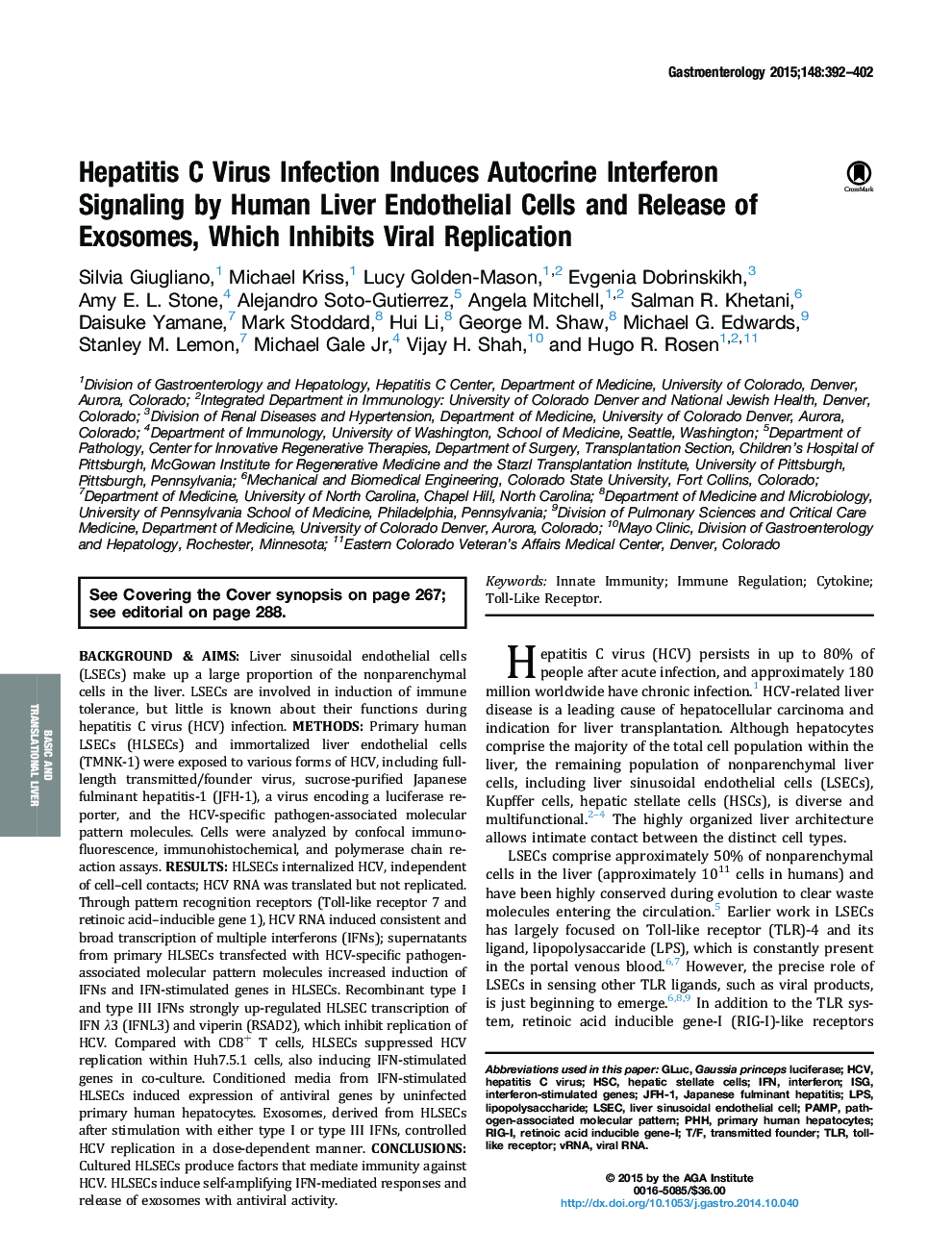| کد مقاله | کد نشریه | سال انتشار | مقاله انگلیسی | نسخه تمام متن |
|---|---|---|---|---|
| 6093881 | 1209799 | 2015 | 24 صفحه PDF | دانلود رایگان |

Background & AimsLiver sinusoidal endothelial cells (LSECs) make up a large proportion of the nonparenchymal cells in the liver. LSECs are involved in induction of immune tolerance, but little is known about their functions during hepatitis C virus (HCV) infection.MethodsPrimary human LSECs (HLSECs) and immortalized liver endothelial cells (TMNK-1) were exposed to various forms of HCV, including full-length transmitted/founder virus, sucrose-purified Japanese fulminant hepatitis-1 (JFH-1), a virus encoding a luciferase reporter, and the HCV-specific pathogen-associated molecular pattern molecules. Cells were analyzed by confocal immunofluorescence, immunohistochemical, and polymerase chain reaction assays.ResultsHLSECs internalized HCV, independent of cell-cell contacts; HCV RNA was translated but not replicated. Through pattern recognition receptors (Toll-like receptor 7 and retinoic acid-inducible gene 1), HCV RNA induced consistent and broad transcription of multiple interferons (IFNs); supernatants from primary HLSECs transfected with HCV-specific pathogen-associated molecular pattern molecules increased induction of IFNs and IFN-stimulated genes in HLSECs. Recombinant type I and type III IFNs strongly up-regulated HLSEC transcription of IFN λ3 (IFNL3) and viperin (RSAD2), which inhibit replication of HCV. Compared with CD8+ T cells, HLSECs suppressed HCV replication within Huh7.5.1 cells, also inducing IFN-stimulated genes in co-culture. Conditioned media from IFN-stimulated HLSECs induced expression of antiviral genes by uninfected primary human hepatocytes. Exosomes, derived from HLSECs after stimulation with either type I or type III IFNs, controlled HCV replication in a dose-dependent manner.ConclusionsCultured HLSECs produce factors that mediate immunity against HCV. HLSECs induce self-amplifying IFN-mediated responses and release of exosomes with antiviral activity.
Journal: Gastroenterology - Volume 148, Issue 2, February 2015, Pages 392-402.e13